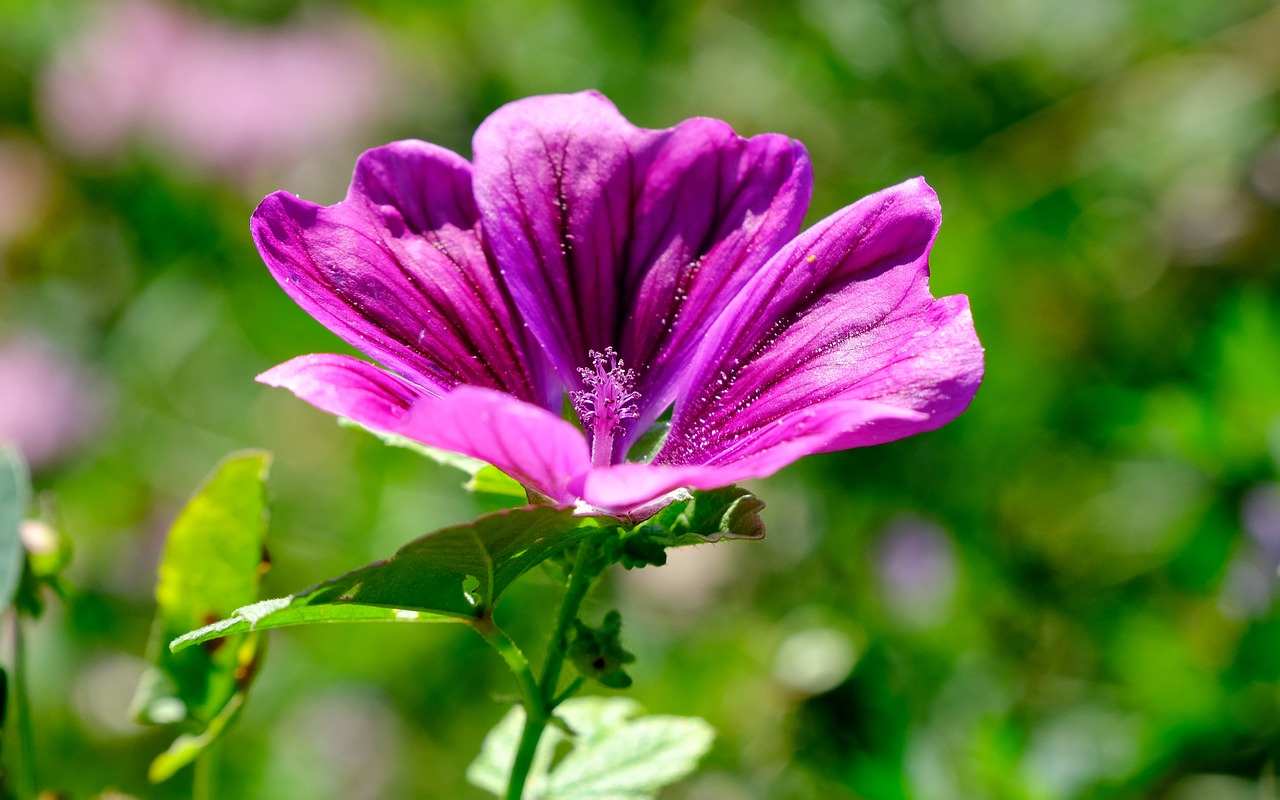The Malva flower is one of the many treasures found in the vast and fascinating world of herbal remedies. For centuries, this lovely and advantageous flower has been used extensively in traditional medicine due to its numerous health advantages. This blog takes us on a journey through the fascinating world of Malva flowers, examining their types, origins, and the various ways they improve our health. When we explore the essence of Malva flowers, we find that they are important historically as well as having benefits today in natural health practices.
What is Malva Flower
In the world of plants, the Malva flower, which belongs to the Malvaceae family, is a symbol of grace and healing. Known for its vivid petals and therapeutic qualities, common mallow is how people often refer to it. Because of their therapeutic qualities, Malva flowers have long been a mainstay of herbal medicine, being used to treat a wide range of illnesses. These flowers are a monument to nature’s capacity for nurturing and healing, more than just a beautiful sight.
Where Can I Usually Find Malva Flowers?
The resilient nature of nature is exemplified by the Malva flower, which thrives mainly in Europe and the Mediterranean. It has spread across several continents thanks to its capacity for environmental adaptation. These purple blooms, which accentuate the surrounding scenery, are frequently seen adorning fields and roadside ditches. Their extensive distribution throughout various regions not only demonstrates their adaptability but also their availability as a natural remedy resource.
Health Benefits of Malva Flowers
- Antimicrobial Properties: The antimicrobial properties of malva flowers are well known. They provide a natural substitute for synthetic antimicrobials and are effective against a range of microbial infections. Because of this, they are especially useful in the present day, when antibiotic resistance is becoming a bigger issue.
- Hepatoprotective Effect: Malva flowers have a major positive impact on liver health, and the liver is essential for detoxification. They support overall liver function and health because they have hepatoprotective properties, which help shield the liver from damage caused by toxins.
- Anti-inflammatory Properties: Malva flowers provide a natural remedy for inflammation, which is the underlying cause of many health problems. They can effectively relieve inflammation-related discomfort in a variety of conditions, from sore throats to digestive problems, thanks to their anti-inflammatory qualities.
- Antioxidant-Rich: Malva flowers’ abundance of antioxidants aids in the body’s defense against dangerous free radicals. In order to prevent cellular damage and combat oxidative stress, which is connected to a number of chronic diseases, this antioxidative action is essential.
- Potential Anticancer Effects: New studies indicate that malva flowers may be able to prevent and treat cancer. Their special compounds are of interest to oncological researchers because they show characteristics that may inhibit the growth of cancer cells.
- Skin Conditions: Malva flowers have calming and restorative qualities that contribute to their benefits for skin health. They are an important component of natural skincare products because they can be used to soothe irritated skin, lessen inflammation, and encourage healing.
Types of Malva Flowers:
Malva flowers come in a variety of varieties, each with special qualities and advantages.
- Common mallow, Malva sylvestris, is a plant used in traditional medicine and is noted for its eye-catching purple flowers.
- Malva neglecta: Known for its pale flowers and smaller size, this plant is typically found in untamed areas.
- Known by its delicate, musk-scented pink flowers, Malva moschata, or Musk Mallow, is a popular plant in gardens.
- The large, showy flowers of Malva alcea, also known as the Hollyhock Mallow, are frequently used in ornamental gardening.
- Bull Mallow, Malva nicaeensis: Noted for its larger leaves and strong growth, this plant can withstand a wide range of climates.
Investigating the malva flower reveals a world in which health and beauty coexist. These flowers provide a natural route to wellbeing, both in their historical use in herbal medicine and in their contemporary applications. Accepting the Malva flower into our lives serves as a reminder of the delicate balance that exists between environmental sustainability and health, as well as a way to connect with the healing powers of nature. We leave the world of Malva flowers having gained a greater understanding of these natural treasures and their significance to our wellbeing.

